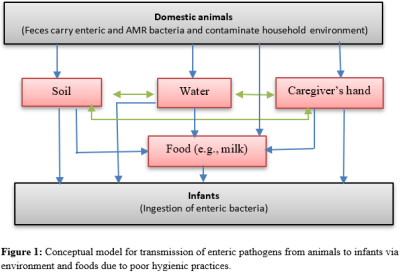Division of Research & Innovation
Fighting Harmful Bacteria: Hygiene and Health in Bishoftu, Ethiopia
Reckitt Global Hygiene Institute (RGHI)-funded research project tackles enteric and antimicrobial resistance bacteria
Antimicrobial resistance (AMR) is a growing global health problem affecting people, animals, and the environment. As bacteria become resistant to drugs like penicillin, treatments become less effective, causing more illness and deaths. Since human, animal, and environmental health are closely connected, tackling AMR requires a unified approach. In areas where animals are raised near homes, their waste can contaminate water, soil, and surfaces with resistant bacteria. This is especially dangerous for children in developing countries, where clean water and sanitation are often limited, increasing the risk of exposure. Understanding how AMR spreads is key to finding solutions.
In Ethiopia, studies have reported the presence of various AMR bacteria in animals, environments, and food. However, there is limited information on the pathways through which enteric and drug-resistant bacteria are transmitted from animals to children. This research aims to generate insights into the transmission of antimicrobial-resistant E. coli, Salmonella, and Listeria from animals to children through environmental and food contamination pathways in the urban and peri-urban areas of Bishoftu Town, Ethiopia. To achieve this, we will collect data on antimicrobial use in both animals and humans and identify pathogens in samples collected from humans, animals, and the environment using standard culture methods and whole genome sequencing. Genomic sequencing will help examine the genetic relatedness among isolates and determine the potential roles of food and the environment in the transmission of AMR bacteria from animals to children in household settings. Based on these findings, we will compare the relationships of enteric and antimicrobial-resistant bacteria across different sources and identify transmission pathways from animals to infants.
The evidence generated from this study will have a significant impact informing the development and testing of intervention strategies to combat enteric and AMR infections acquired from animals, particularly in contexts with poor hygiene practices at animal farms, in the environment, and within households. Furthermore, the project's results could serve as a model for addressing other zoonotic diseases and AMR infections in developing countries with similar socio-economic conditions.
For more information on this research, contact Dr. Fanta Gutema, research assistant professor in the School of Public Health and project PI, at fdgutema@memphis.edu

Animal farming within household environments can contaminate environmental fomites, such as water, soil, and surfaces, with animal feces carrying resistant bacteria. Children in developing countries are particularly vulnerable to exposure, as widespread environmental contamination often occurs in areas with limited access to safe water, sanitation, and hygiene services (Figure 1).
